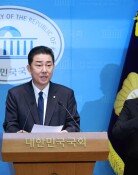A Journey To China with Koryeo Dynasty`s Famous Scholar Lee Jae-hyun
A Journey To China with Koryeo Dynasty`s Famous Scholar Lee Jae-hyun
Posted July. 18, 2003 22:20,

Searching for
Written by Ji Young-jae
Published by Blue History
Great sceneries evoke poetry. Old peoples poetry might provide a good source for writing a poem. Only if we could picture poetry written by our ancestor while traveling China?
is a journal written by Ikjae Lee Jae-hyun, a scholar and politician who lived in the late Koryeo Dynasty, while traveling in China. The journal is not extant but the author tried to recover the book through his elaborate historical investigation.
This is how the book Searching for came on to the shelve.
written by Lee Jae-hyun includes 270 sets of poetry and 54 sets of short and long phrases. The greatest contribution of Searching for Seojeongrok is its clarification that the above works of art were put on in the order of its creation. The author made a lot of effort to analyze words indicating relevant places and dates while trying to figure out Lee Jae-hyun`s traveling routes by comparing them with today`s roads. Thanks to the author`s efforts, readers would find out that poetry from consisted of several series and these poems came to be revived in their historical sense by revealing their creation dates.
Who is Lee Jae-hyun? He was a Koryeo politician who served seven kings and lived the Chinese Yuan Dynastys invention period. He was a great scholar focusing on receiving Sung Confucianism and wrote many historic books. He was referred as one of the greatest travelers and poets of Koryeo.
Scholar Lee first traveled to China (then Yuan Dynasty) when he was 27 and reached every section of the continent until 36. The author calculated his whole traces reaching beyond 40,000 kilometers he was quite a traveler!
He also writes a poem wherever he went, so it would not be an overstatement when the author claimed that the great poet traveled to write poetry.
But, the true virtue of this book comes from the fact that the author personally visited Lees travel routes. The author not only checked out the actual spots the poet took some 700 years ago, he also let readers feel still-fresh emotions of the sites.
For example, the author described the tomb of the Yuan Dynasty`s representative Sung Confucianism scholar He Hyung as a small tomb in the middle of the vast farm and next to it is sheep and a person takes a nap.
A real field investigation should combine time with space. That means inspiring a life of time to space and a volume of space to the flow of time, which is different from a simple tour of moving places to places. The author testified that he tried to witness traveling by poetry, but in fact, guided readers to enjoy Lee Jea-hyun`s poetry in the frameworks of given time and space.
Another notable fact is that the author added elaborate explanation to each and every poem. Without the annotations, readers would have to travel far way to China and read thousands of books to comprehend Lee`s poetry.
The book can be interpreted as a valuable translation and annotation copy of Lee Jae-hyun`s poetry given that the author corrected wrong words by comparing various existent copies.
His translation of Lee`s poetry written in Chinese characters is good and easy to read even in the train during travel to China. Only shortcoming is that the book needs more explanation about Lee Jae-hyun and his era as well as historical context in the late Koryeo Dynasty.



![‘건강 지킴이’ 당근, 효능 높이는 섭취법[정세연의 음식처방]](https://dimg.donga.com/c/138/175/90/1/wps/NEWS/IMAGE/2026/01/18/133181291.1.jpg)



